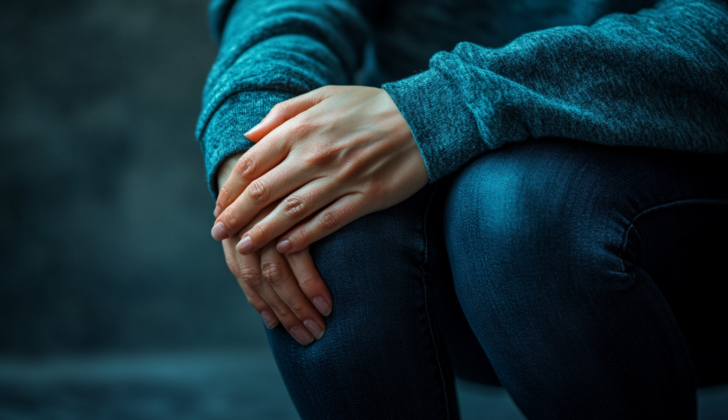Is My Knee Pain Normal? What You Need to Know
Knee pain is one of the most common complaints among people of all ages. Whether it comes from walking, running, kneeling, or just getting up from the couch, that ache or twinge in your knee can quickly make you wonder:
“Is this normal, or should I be worried?”
The short answer is: some knee pain is normal, especially with age or after physical activity—but not all pain should be ignored.
Let’s break it down so you can understand what your knee is telling you, when to rest it, and when it’s time to see a healthcare professional.
Why Knee Pain Happens
Your knee is a hardworking joint. It connects your thigh bone (femur) to your shin bone (tibia) and involves ligaments, cartilage, tendons, and muscles working together.
Because the knee:
-
Bears weight
-
Bends and straightens all day long
-
Supports twisting and turning
It’s more likely to experience wear and tear, strain, or injury over time.
When Knee Pain Might Be “Normal”
Here are some situations where mild knee discomfort may be considered a normal part of life:
1. You Recently Increased Your Activity Level
If you went for a longer walk than usual, started a new workout, or played a sport you haven’t done in a while, some next-day soreness is expected.
Example: “I took the stairs all day at work, and now my knees feel stiff.”
Normal? Yes—this may be temporary inflammation or muscle soreness.
2. You’re Getting Older
As we age, our joints naturally go through some changes. Cartilage may thin, and the knees might feel stiffer in the morning or after sitting.
Normal? Often yes—as long as the pain improves with gentle movement.
3. You Kneel or Squat Often
Activities like gardening, cleaning, or working on the floor can put extra pressure on the kneecap, causing irritation or discomfort.
Normal? Yes—but if it’s frequent, you may want to use knee pads or modify your movements.
When Knee Pain Is NOT Normal
Some types of pain or symptoms are red flags. You should NOT ignore them.
1. Sharp, Sudden Pain
If your knee pain comes on suddenly (especially with a pop), it could be a ligament or meniscus injury.
Example: “I twisted my knee playing basketball and now I can’t put weight on it.”
Normal? No—see a doctor.
2. Swelling That Doesn’t Go Away
A little swelling after exercise might be okay. But persistent or significant swelling may point to something more serious, like an injury or arthritis.
Normal? Not if it lasts more than 2–3 days or affects movement.
3. Clicking, Locking, or Giving Way
If your knee gets stuck, clicks painfully, or gives out under you, that’s a sign of joint instability or cartilage damage.
Normal? No—get it checked out.
4. Pain That Wakes You Up or Limits Daily Life
Pain that interferes with sleep, walking, or basic daily activities isn’t just “getting older.” It deserves attention.
Normal? No—talk to a healthcare provider.
When to See a Doctor
Here are signs it’s time to seek medical advice:
-
Pain lasts longer than 2 weeks without improvement
-
You can’t put weight on your leg
-
The knee feels unstable or gives out
-
There’s redness, warmth, or fever (possible infection)
-
You’ve had a past knee injury and symptoms are returning
Early treatment can prevent long-term damage. Don’t “tough it out” if your gut is telling you something is wrong.
What You Can Do at Home
If your knee pain seems mild and likely related to activity or aging, try these simple steps:
R.I.C.E Method:
-
Rest – Avoid high-impact movements
-
Ice – 15–20 minutes at a time, 2–3 times a day
-
Compression – Use a soft wrap if helpful
-
Elevation – Raise the leg above your heart to reduce swelling
Gentle Movement:
-
Light stretching and walking can help keep joints mobile
-
Avoid total immobility unless advised by a doctor
Over-the-Counter Relief:
-
Try ibuprofen or acetaminophen if cleared by your doctor
-
Use topical creams for soreness
Preventing Knee Pain Long-Term
You can protect your knees by focusing on strength, flexibility, and smart habits:
-
Strengthen your thighs and hips—these muscles support your knees
-
Stretch regularly to avoid tightness
-
Wear supportive shoes—flat, worn-out soles can strain joints
-
Choose low-impact cardio like biking or swimming
-
Cross-train to avoid overusing one set of muscles
-
Maintain a healthy weight—extra pounds = more stress on knees
Final Thoughts: Listen to Your Knees
If your knee feels sore after a long day or a new workout, that might be a normal sign of use.
But if your knee pain sticks around, worsens, or limits your life, it’s not just “normal aging.” It’s your body asking for help.
Early care and small changes can make a big difference.
When in doubt, talk to your healthcare provider. Your knees carry you through life—let’s keep them strong, stable, and pain-free for years to come.
Explore More:
MDS: Coffee and Healthy Aging in Middle-Aged Women: A Warm Cup of Wellness
MDS: Healthy Holiday Eating Strategies: How to Make Nutritious Choices and Avoid Weight Gain












